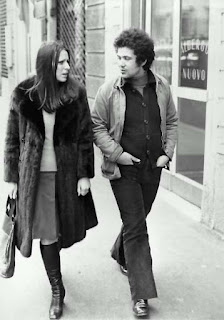Carlo Gesualdo – composer
Madrigal writer was also a murderer
Carlo Gesualdo da Venosa, who composed highly experimental music for his time, was born on this day in 1566 in the principality of Venosa, then part of the Kingdom of Naples. He was to become known both for his extraordinary music and for the brutal killing of his first wife and her aristocratic lover after he caught them together. Gesualdo was the nephew of Carlo Borromeo, who later became Saint Charles Borromeo. His mother, Geronima Borromeo, was the niece of Pope Pius IV. Although Gesualdo was sent to Rome to begin an ecclesiastical career, he became heir to the principality after his older brother died. He married his cousin, Donna Maria D’Avalos, and they had a son, Emanuele. Gesualdo was devoted to music from an early age and mixed with musicians and composers, learning to play the lute, harpsichord and guitar. Donna Maria began an affair with Fabrizio Carafa, Duke of Andria and Count of Ruova, and one night in 1590 Gesualdo caught them in flagrante at the Palazzo San Severo in Naples. He killed them both on the spot. A delegation of officials from Naples inspected the room where they were killed and found the corpses were mutilated. Read more…
________________________________________
Antonello Venditti - enduring music star
Roman singer-songwriter's career spans almost 50 years
Singer-songwriter Antonello Venditti, one of Italy's most popular and enduring stars of contemporary music, was born on this day in 1949 in Rome. Famous in the 1970s for the strong political and social content of many of his songs, Venditti can look back on a career spanning almost half a century, in which he has sold more than 30 million records. Taking into account singles, studio and live albums and compilations, Venditti has released more than 100 recordings. His biggest success came with the 1988 album In questo mondo di ladri (In this world of thieves) - which sold 1.5 million copies, making it jointly the eighth best-selling album in Italian music history. Venditti's music ranges from folk to soft rock, often with classical overtones. He enjoyed sustained success in the 1980s and 90s, when Cuore (Heart), Benvenuti in Paradiso (Welcome to Paradise) and Prendilo tu questo frutto amaro (Take this Bitter Fruit) all sold well. His versatility as a singer was demonstrated with the 1979 album Buona Domenica, which contained several ballads including one, Modena, which was regarded as among his finest songs. Read more…
______________________________________
La Festa della Donna – Women’s Day
Bright fragrant mimosa signals respect
La Festa della Donna - Women’s Day - is celebrated in Italy on this day every year and is an occasion for men to show their appreciation for the women in their lives. In many parts of Italy today, men will be seen carrying bunches of prettily wrapped mimosa to give to women who are special to them. The flowers might be for their wives, girlfriends, mothers, friends or even employees and are meant as a sign of respect for womanhood. The custom of men giving mimosa to their ladies began in the 1940s after the date 8 March was chosen as the Festa della Donna in Italy. The date, which coincides with International Women's Day, has a political significance for campaigners for women's rights in Italy, marking the anniversary of a strike by female textile workers in New York in 1857 and the so-called 'bread and peace' strike by women in Russia in 1917, but has more recently become a celebration similar to Mothering Sunday or St Valentine's Day. Yellow mimosa was chosen as the flower to give because it is in bloom at the beginning of March, it is relatively inexpensive, and the scent of it in the atmosphere is a sign that primavera (spring) is near. Read more…
_____________________________________
Gianni Baget Bozzo – priest and politician
Theologian moved from party to party
Prolific writer, ordained Catholic priest and political activist Gianni Baget Bozzo - often referred to as Don Gianni - was born on this day in 1925 in Savona in the northern Italian region of Liguria. He took the name Baget from his mother, who was of Catalan origin but died when he was five, and Bozzo from the two uncles who raised him. Baget Bozzo was known for supporting parties from both ends of the political spectrum at different times. At one time a Christian Democrat activist, Baget Bozzo was elected as a Member of the European Parliament for the Italian Socialist party in 1984, which led to him being suspended from the priesthood. He was a member of Silvio Berlusconi’s centre-right Forza Italia party from 1994. He wrote many books about Christianity and as a theologian was a follower of the theories of Joseph Ratzinger, who became Pope Benedict XVI in 2005. Baget Bozzo was raised in Genoa where he graduated in law. He studied at the Pontificia Universita Gregoriana in Rome, which was established by Ignatius Loyola in 1551 as a school of grammar, humanity and Christian doctrine. It was more generally referred to as the Roman College. After graduating Baget Bozzo was ordained as a priest in 1949. Over the years he contributed to many newspapers, in particular La Repubblica and he wrote dozens of books. Read more…

.jpg)

.jpg)



.jpg)


.jpg)


.jpg)

.jpg)


_in_1968.jpg)



.jpg)
.jpg)




.jpg)
,_1490_ca..JPG)

.jpg)